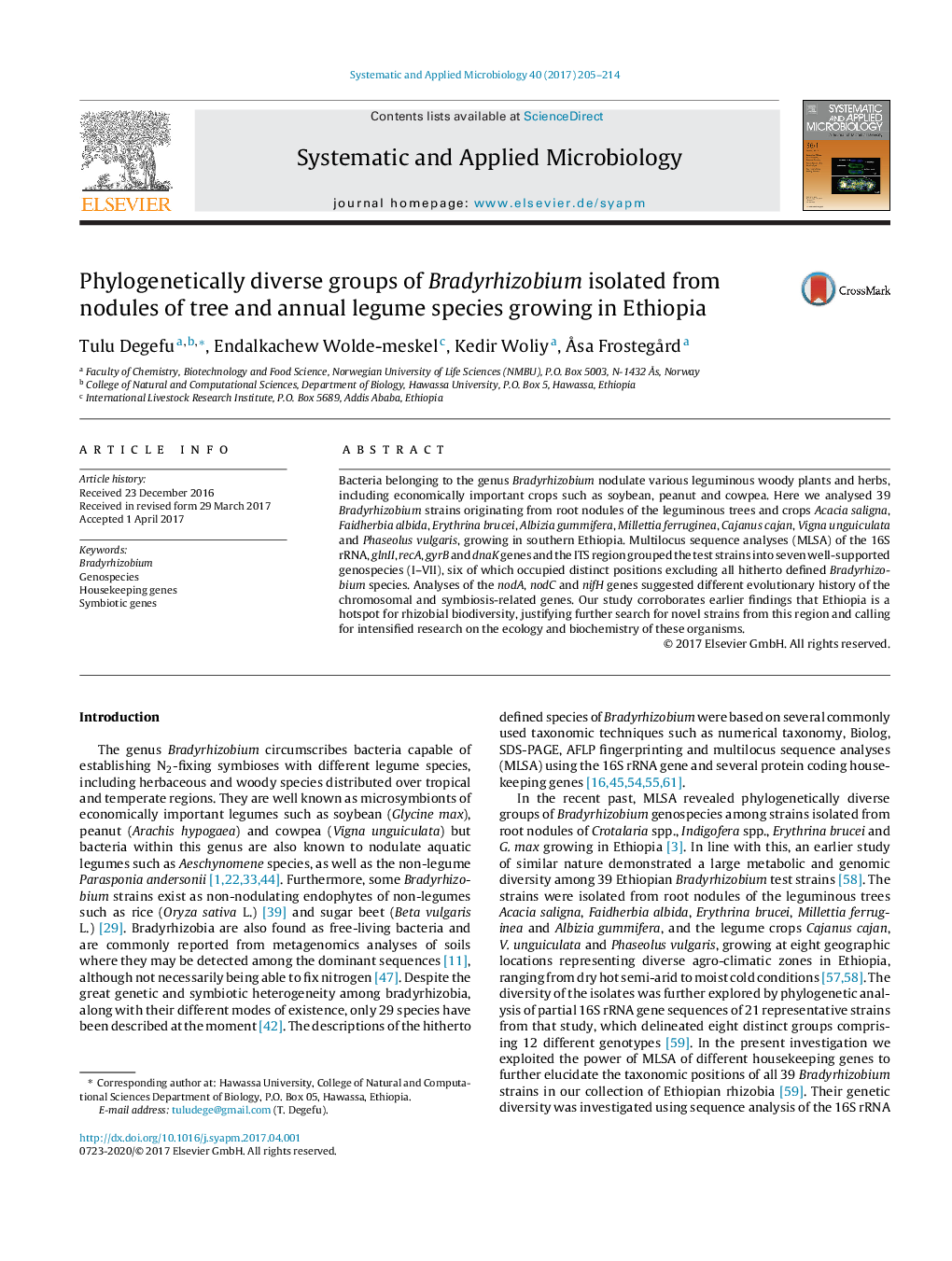| Article ID | Journal | Published Year | Pages | File Type |
|---|---|---|---|---|
| 5519131 | Systematic and Applied Microbiology | 2017 | 10 Pages |
Bacteria belonging to the genus Bradyrhizobium nodulate various leguminous woody plants and herbs, including economically important crops such as soybean, peanut and cowpea. Here we analysed 39 Bradyrhizobium strains originating from root nodules of the leguminous trees and crops Acacia saligna, Faidherbia albida, Erythrina brucei, Albizia gummifera, Millettia ferruginea, Cajanus cajan, Vigna unguiculata and Phaseolus vulgaris, growing in southern Ethiopia. Multilocus sequence analyses (MLSA) of the 16S rRNA, glnII, recA, gyrB and dnaK genes and the ITS region grouped the test strains into seven well-supported genospecies (I-VII), six of which occupied distinct positions excluding all hitherto defined Bradyrhizobium species. Analyses of the nodA, nodC and nifH genes suggested different evolutionary history of the chromosomal and symbiosis-related genes. Our study corroborates earlier findings that Ethiopia is a hotspot for rhizobial biodiversity, justifying further search for novel strains from this region and calling for intensified research on the ecology and biochemistry of these organisms.
